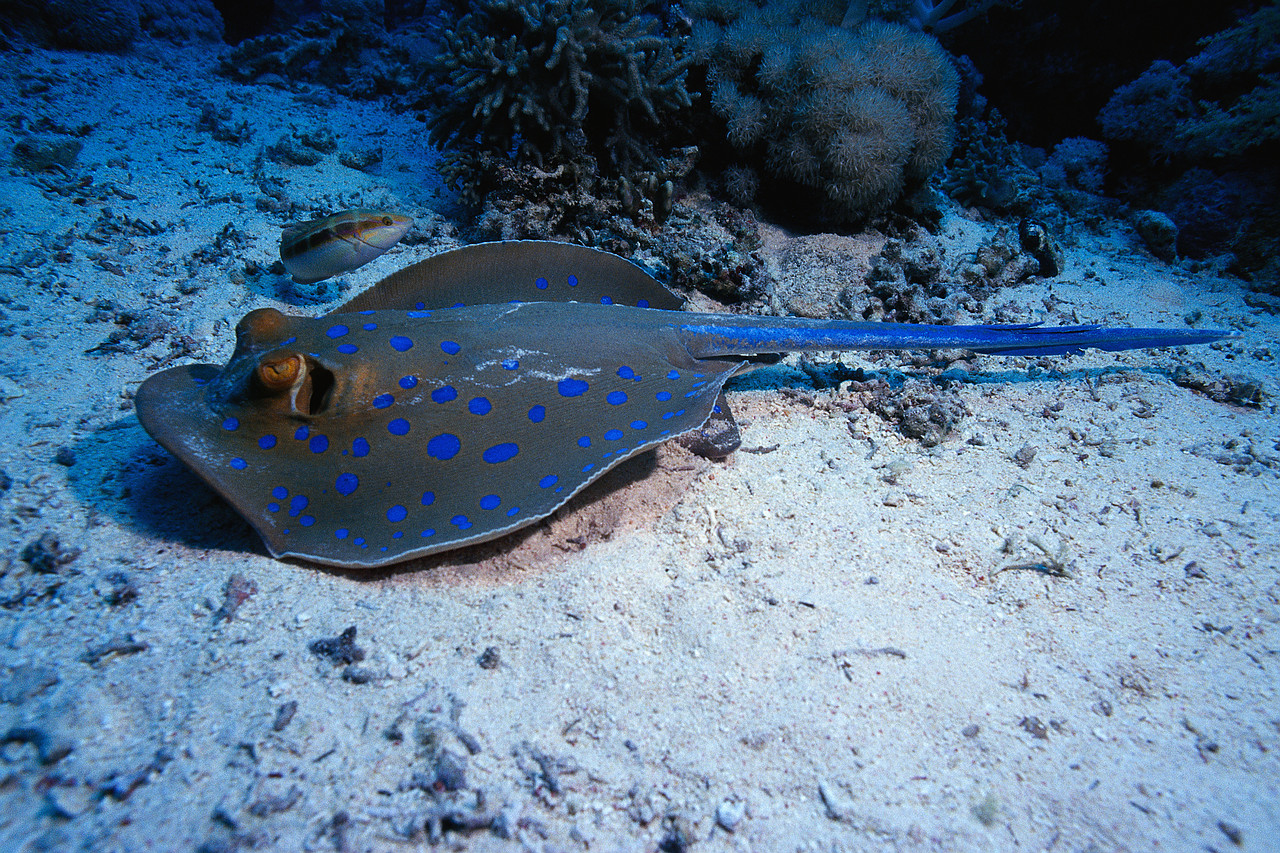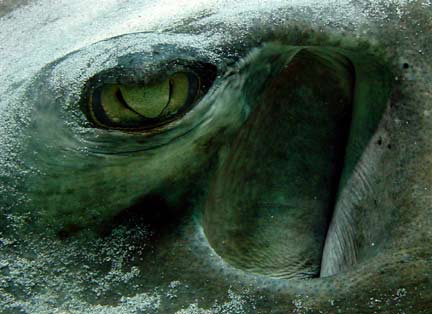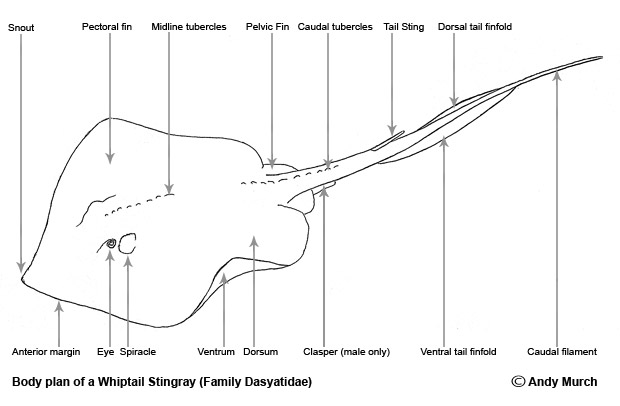 |
Stinging Barb Stingrays are highly preyed-upon creatures. Hammerheads are their most frequent predator and are obviously MUCH greater in size than the ray. To compensate for their small size, the rays have developed a stinging barb at the end of their tail. Many researchers believe that this is a modified dermal denticle, or tooth-like scale. When threatened, the stingray can curl this venomous barb over its body to sting their predator. |
| Mouth and Teeth The location of the stingray's mouth is crucial to its feeding habits. Since stingrays dig for food in the sandy bottoms of reefs, their mouths are located on their ventral side. Also, the stingray's teeth are made of strong, blunt cartilage that can easily crush shells. |
 |
Body Shape Stingrays swim very close to the ocean floor so their bodies are wide and flat, making locomotion easier around their habitat. In addition, these rays posses large pectoral discs that they easily undulate to glide through the water. |
| No Bones About It A stingray's body consists completely of cartilage. Cartilage is a tough, elastic, fibrous tissue that makes up the entire skeleton of the stingray. |
| Previous Page |


